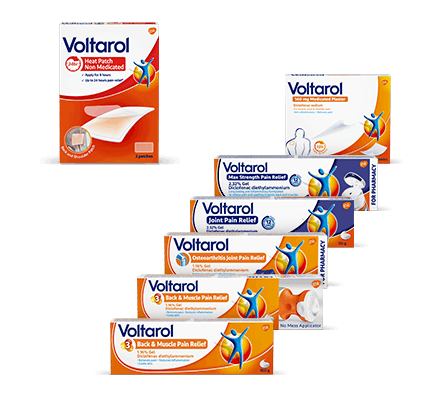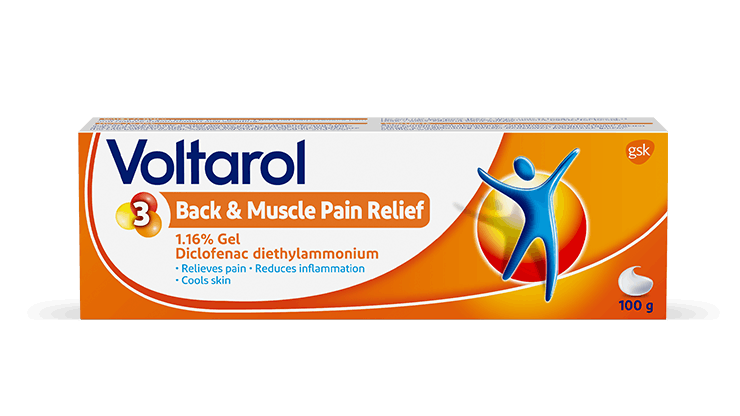
SHARE THIS ARTICLE:
If you’ve ever experienced back pain, you are in good company. Back pain, especially lower back pain, is one of the most common causes of body pain.
In fact, back pain is the leading cause of disability worldwide. A whopping 92% of people experience pain in their back at some point. Another 10% of people describe lower back pain as their most frequently experienced pain....
It’s hard to fully appreciate how much your back is involved in nearly any and all movement. Until you have back pain, that is. Then you know! Here we look at the different types of back pain, what causes it, and how you can get some back pain relief.
Types of back pain
Back pain can be acute or chronic. Acute back pain lasts for three months or less, and heals within an expected amount of time. Chronic back pain, on the other hand, is continual or recurring and lasts for three months or more, beyond a reasonable healing time.
Back pain is usually classified based on the area of your back that is affected.
| Cervical | Pain in the vertebrae of your neck |
| Thoracic | Pain in your upper back |
| Lumbar | Pain in your lower back |
| Sacral or coccyx | Pain in the lowest vertebrae of your back in the region between your hips (sacral) or pain in your tailbone (coccyx) |

Symptoms and signs of back pain include:
- Soreness
- Stiffness
- Tingling
- Inability to stand up straight without pain
- Decreased range of motion from side to side
- Inability to flex your back
When to see a doctor about your back pain
Here’s the good news. In most cases, back pain resolves on its own with home care and rest. This can take a few weeks. However, if your back pain does not improve during this time, see a doctor.
Additionally, there are a number of back pain symptoms that should not be ignored. In rare cases, back pain can be a sign of an underlying medical condition that requires attention.
Make an appointment with a healthcare professional for assessment if your back... pain is:
- Severe and doesn't improve with rest
- Spreading down one or both legs, especially if the pain extends below the knee
- Causing weakness, numbness or tingling in one or both legs
- Accompanied by unexplained weight loss
- Accompanied by fever
Seek immediate emergency medical treatment if your back pain is paired with:
- New bowel or bladder problems
- Fever
These could indicate a serious emergency medical condition called cauda equina syndrome (CES), which causes paralysis to the nerve roots in the lower end of your spinal cord.
Diagnosing what causes back pain can be tricky. Not only are there many potential causes (think about how many ways we use our back. This creates endless ways of it being injured) – but back pain often develops from a cause that is not easily tested through imaging or lab tests. In fact, 85% of lower back pain has an unknown cause. Causes of back pain can include injury, joint problems and muscle strains – or even sitting or lying down for too long.
Causes of back pain include:

- Strained, pulled, or torn muscles
Pulled muscles are one of the most common causes of back pain. Whether from lifting a heavy object, heavy exercise, lugging around a heavy shoulder bag, or even just from twisting or turning just so (ouch! We hate when that happens!), many people experience strained back muscles at some point. - Infection in the spine
Fungal or bacterial infections of the spine, such as from staph, E. Coli, or tuberculosis can cause back pain. These can be treated with antibiotics or anti-fungal medication together with your doctor. - Sciatica
Sciatica results from pressure placed on the sciatic nerve, the nerve that runs from your tailbone down through the back of your leg. It can cause numbness, tingling, and pain in your tailbone and the back of your leg. - Scoliosis or other skeletal irregularities
Scoliosis is a curving of the spine to one side or the other. It can cause you to hunch your back, depending on the severity of the curve. It can be corrected with surgery. - Slipped or bulging disc
Your spine is made up of individual bones called vertebrae. Your vertebrae are stacked one on top of the other, with a disc in between each one that acts as a cushion.
Injury or weakness can cause the soft inner part of a disc to “slip” or protrude out of the disc’s tougher outer ring. This is quite painful. In some cases, the slipped disc compresses one of your spinal nerves, causing pain, numbness, and tingling along that nerve. You can have a slipped disc, also known as a herniated disc, in any part of your spine. - Osteoarthritis
Osteoarthritis occurs when the cartilage providing cushioning between your joints deteriorates, leaving bone to rub on bone. Osteoarthritis, while commonly associated with fingers, knees or hips, can also occur in the back. Over time, this can lead to a narrowing of the spinal column, a painful condition known as spinal stenosis. - Osteoporosis
Osteoporosis is a condition in which your bones lose density, become brittle, and start to break. This can happen in your spine, leading to fractures and compression of your vertebrae. They can be quite painful. - Trauma from an injury or fall
If you are experiencing back pain after recently injuring yourself – perhaps you slipped and fell, or maybe you got into a little fender bender – you may have hurt your back.
The location of back pain can be helpful in identifying its cause. Lower back pain causes and upper back pain causes can vary somewhat.
Causes of sacral pain, or pain in your tailbone include:
- A fall
- Pregnancy and childbirth
- Hip or spine surgery
Lumbar, or lower back pain causes include:
- Sitting or driving in a hunched position
- Strain or tear in the muscles and ligaments from bending, lifting or carrying heavy objects
- Pregnancy
- Urinary tract infection or kidney infection
- Menstrual cramps
Thoracic, or upper back pain causes include:
- Weak muscles, which can cause muscular irritation
- Accidents or trauma, such as car crashes
- Overuse or sports injuries
- Poor posture
Causes of pain in your upper spine, in the vertebrae of your neck that make up the region known as your cervical spine, include:
- Muscle strains from overuse, such as from repetitive motions
- Poor, hunched posture
- Sleeping in a funny position without proper neck support
- Trauma, such as whiplash
- Awkward neck movement (you know the feeling…when you tweak your neck just so…)
Causes of back pain at work
If your job involves the following tasks and they are not performed properly, it can lead to back pain:
- Lifting, carrying, pushing or pulling incorrectly
- Sitting or driving for long periods without taking a break
- Standing or bending for long periods

Everyday activities that can cause back pain
Back pain can be triggered by everyday activities at home including:
- Bending awkwardly
- Lifting, carrying, pushing or pulling incorrectly
- Slouching in chairs
- Standing or bending for long periods
- Twisting
- Over-stretching
- Sitting or driving for long periods without taking a break
Preventing back pain
So much of preventing requires behavioral changes in how we move about our day-to-day lives. The basics of preventing back pain can be summed up in two words: move well!
Moving well breaks down into four broad principles: lifting well, standing well, sitting well, and sleeping well.
Lift well
Lift as little as possible. But when you must, lift with your legs, not from your back. Do this by bending your knees and squatting to pick an item up from the floor, rather then bend at your waist.
Stand well
When you are standing, keep your feet hips width apart to give yourself a solid base for your body weight. Keep your hips square, rather than popping a hip to one side or the other. Remind yourself to roll your shoulders back to get rid of a hunch. You may want to explore the option of a back brace or device to remind you not to hunch.
Sit well
Good posture when you are standing and when you are sitting will help prevent both lower back pain and upper back pain. Sure, it’s tempting to hunch over to see your computer/phone/tablet screen, but avoid it. Raise your screens up to eye level so that you don’t have to compromise your posture in order to see them. Keeping your legs uncrossed can also create a solid base to keep your spine in alignment.
Sleep well
Sleeping on a supportive mattress can make a world of difference when it comes to back pain. If you’re putting in an effort during the day to maintain good posture, there’s no sense in sleeping on a mattress that keeps your spine sagging and bending every which way for the hours you’re asleep. Mattress stores have helpful guides on how to choose a mattress that is best suited to you based on your sleep style. For instance, whether you like to lie on your side, back, or stomach makes a difference. Here, the type of pillow you use can also have an outsized impact on how your back and neck feel in the morning.
Simple, right? But wait. There’s more. In addition to the overarching guide above, there are a number of tips to stave off back pain. But don’t worry. These next back pain prevention tips are fairly straightforward as well. In order to prevent back pain whilst getting some back pain relief:
- Maintain a healthy weight
Extra kilograms put a strain on your posture, which strains your back muscles. Excess weight is also a culprit in sciatica pain. Maintaining a healthy weight may ease your pain. - Stay strong
Strengthening your muscles – especially your core muscles in your abdomen and back – can go far in preventing back pain. - Stay flexible
Stretching can keep your back muscles loose and warm, so they’re less prone to pulls and injuries. Flexibility in your hips, for instance, can keep your pelvis properly aligned to improve posture and prevent pain. Look into stretches and exercises for back pain that target upper back pain or lower back pain specifically. That way, you can put together a targeted stretching routine, tailored to your needs. - Quit smoking
In addition to its other negative health effects, smoking is a risk factor for back pain. In fact, studies have shown that there is a higher prevalence of back pain among people who have been exposed to cigarette smoke. We know that quitting can be hard. Consider reaching out to a healthcare professional for help. - Wear proper footwear
Support starts from having a proper base. The shoes you wear have a big impact on your back. Wear shoes that provide good support. Avoid wearing high-heels for any length of time. - Relax
Your emotional well-being can impact back pain. Stress, anxiety, and even depression, can make your back tense up. So, go ahead - kick back, put your feet up, and practice some self-care.
Explore Voltarol products for pain relief

SHARE THIS ARTICLE:
Health, wellness & your pain
Pain is rarely just physical nor is it always solved by taking medicine alone. Voltarol is your ally in helping you take more control of your pain journey, from the way to sleep, to what you eat, mental wellbeing and complementary pain relief therapies.
















